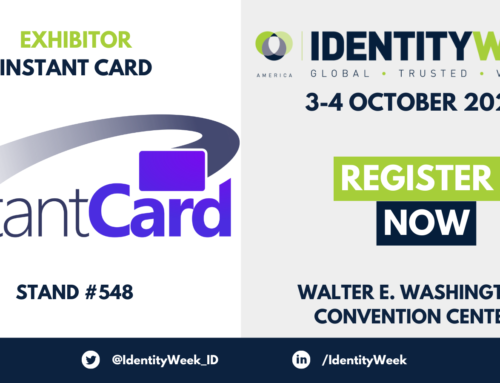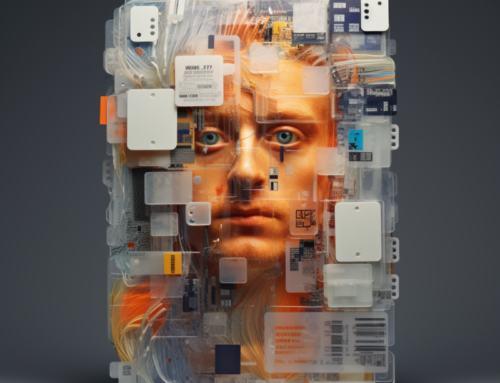Whenever we make a purchase, we use barcodes. We rarely pay any notice to these machine-readable codes. However, barcodes — whether small businesses or global conglomerates use them — play a vital role in our economy’s efficient and effective operation.
I.D. barcodes are an essential aspect of I.D. verification, as phone barcode scanners and barcode scanner software can instantly validate and categorize I.D. cards. This saves time and helps to process I.D.s without leaving room for human error.
You may be wondering how to make an I.D. card with a barcode, how to make a scannable I.D. card, or how to create a barcode for I.D. cards. Don’t worry, we’ve got you covered. This post will provide some critical information about barcodes, their history, and the purpose of I.D. barcodes. Finally, we’ll explain how to create an I.D. card with a barcode.
What is a Barcode?
A barcode is a black and white image consisting of several parallel lines that, when scanned, provides information about a product. The most popular form of a barcode is the Universal Product Code (UPC), which grocery stores and other retailers have been using for over fifty years.
UPC barcodes are read using special optical scanners. Once the scanner skims across the barcode, it processes data. The scanner then displays this information, including the costs for a product or service, on a computer screen.
However, when it comes to identification, you must use an I.D. barcode scanner. Barcode generators for I.D. cards create unique barcodes that store relevant personal information that is displayed when the card is processed with an I.D. barcode scanner.
How Do Barcodes Work?
The principle behind barcodes is relatively simple. Different items have unique numbers printed on them, and a scanning device reads and identifies this set of numbers. This technology makes it easy to automate the transfer of information, such as grocery prices or birth dates.
When it comes to I.D. barcodes, information such as your name, age, sex, address, and occupation are all stored in one small barcode. Once scanned, this information can be transferred in a matter of seconds. An I.D. barcode scanner connected to a computer transmits the barcode’s information as though it was typed using a keyboard.
Quick History of Barcodes
The first barcode, invented in 1948 by Bernard Silver and Norman J Woodland, was designed like a bullseye. These two inventors had a keen interest in tackling the supermarket industry’s problems and received a patent in 1952. However, although their barcode idea worked in the lab, it was impractical due to the technological limitations at the time.
During the 1960s, the Association of American Railroads adopted the first linear barcode to use for car tracking systems.
It wasn’t until 1974 that barcodes became commonplace. During this time, the cost of lasers decreased, the integrated circuit rose in popularity, and the UPC barcode was invented. These technological advances combined to create the system that we’re still using to this day in supermarkets and stores all over the world.
Of course, today, digital technology has seen the humble barcode evolve into the Q.R. code, but we’ll save that story for another post.
I.D. Barcodes: Uses
In the I.D. industry, barcodes provide a way to increase card security while storing useful bits of information, such as personal data and serial numbers. I.D. barcodes are an affordable and efficient way of semi-covertly placing information on an I.D. card.
The main advantage of printing barcodes on I.D. cards is that they allow workers to retrieve information about the card user incredibly quickly. Phone barcode scanners and specialist I.D. barcode scanners are incredibly accurate, so you eliminate the possibility of human input error. Plus, the authentication process is instantaneous.
Note that I.D. barcodes also reduce forgery, as each stripe is unique to its card. Therefore, it is tough for somebody to create a fake I.D. card with a usable barcode.
How to Make an I.D. Card with a Barcode
We can help you to create an I.D. card with a barcode in minutes. Using our sophisticated I.D. card software system, we can generate barcodes and add them to your I.D. card quickly and efficiently.
Create your I.D. card on our website by following these steps:
-
Fund Your Account
You can design I.D. cards for free; you’ll only be charged for the printing and posting costs. Our declining balance system makes it easy to facilitate single-ID cards and multiple orders.
-
Approve Your Free ID Card Template
Our team of design professionals can create a free I.D. card template for you or upload your own design.
-
Create Your I.D. Card Using one of our Templates
Enter all relevant information; our web-based system streamlines the I.D. creation process. Once entered, we’ll create a unique barcode that holds all of your data. Next, upload a photo, and you’re good to go.
-
Order the I.D. Cards to be Printed
Here at InstantCard, we have no minimum batch size, and all I.D. cards are shipped on the day they are ordered as long as the order is placed before 4 p.m. EST.
InstantCard Can Help!
From high school I.D. cards to healthcare badges, we can help with all your I.D. needs. Create your I.D. barcode and I.D. card today.



